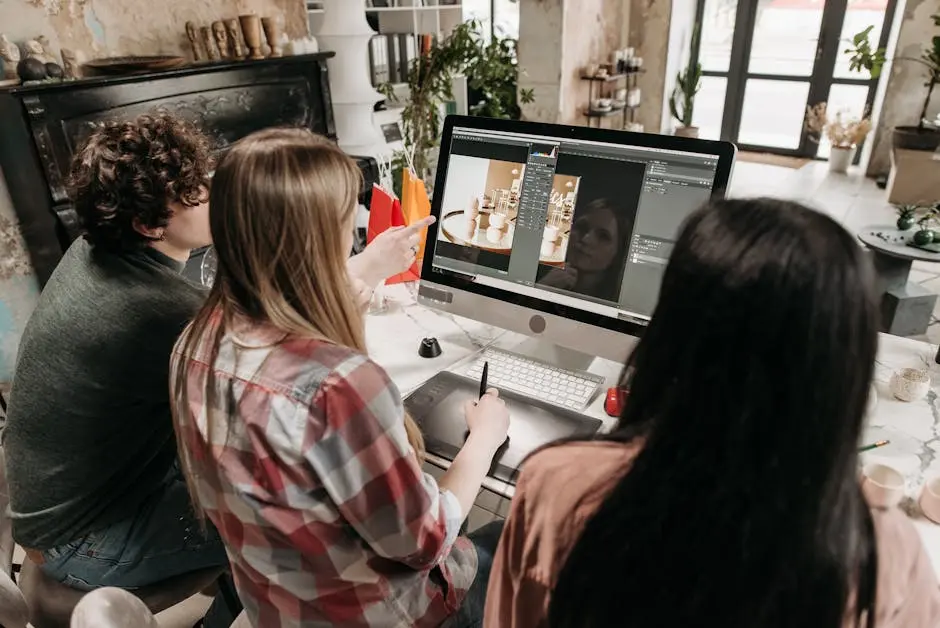Why Are Patterns Important in UX/UI Design?

In the world of UX/UI design, patterns are more than just visual repeats. They are the building blocks that make digital experiences intuitive and seamless. But why are these patterns so crucial, and how do they influence the design process?
Understanding Patterns in UX/UI Design
Patterns in UX/UI design function much like templates in the physical world, providing a structured way to solve common problems efficiently and consistently. They are pre-designed elements that designers use to address recurring design challenges, ensuring that solutions are both effective and quick to implement. By using patterns, designers can maintain consistency in visual language, which is crucial for user comprehension and trust.
When you think about your favorite apps or websites, there's likely a pattern in the navigation bar, buttons, or forms. These patterns are intuitive for users because they've encountered similar designs elsewhere, streamlining the learning curve and making the interaction feel natural. For example, UX patterns serve as repeatable solutions to recurring design problems, helping users navigate effortlessly across different platforms.
Enhancing Usability with Design Patterns
Usability in UX/UI design is greatly enhanced by the use of design patterns. These patterns act as a roadmap, guiding users through interactions and ensuring they complete their tasks without frustration. By providing familiar touchpoints, patterns reduce the amount of conscious effort a user must invest in learning how to use a platform, thereby improving overall user satisfaction and efficiency.
Patterns like the common hamburger menu or standard placement of search bars facilitate ease of access for users. When users encounter familiar elements, they can focus more on the content and less on figuring out how to interact with the interface. As users become accustomed to these design elements, their experience becomes smoother and more enjoyable, encouraging repeat use and engagement.
Patterns as a Tool for Consistency
Consistency is key in UX/UI design, and patterns are instrumental in achieving this. By using standardized elements across a product suite, designers create a cohesive experience that resonates with users. When a user moves from one part of a product to another or even from one related product to another, consistent patterns make transitions seamless, reducing confusion and enhancing satisfaction.
For example, maintaining a consistent color palette or typography throughout an app not only reinforces brand identity but also helps users navigate the interface with ease. This uniformity instills a sense of reliability and professionalism, which is essential for building and retaining consumer trust in digital products.
Encouraging User Engagement
Design patterns play a significant role in capturing and retaining user attention. By seamlessly integrating interactive elements in familiar ways, they create engaging experiences that encourage users to explore and interact with the content. Engaging patterns can transform mundane interactions into delightful user journeys, making the overall experience memorable.
Elements such as strategic call-to-action buttons, interactive galleries, or dynamic forms can be structured using patterns to enhance user engagement. Engaging UI/UX designs often incorporate visually appealing and functionally efficient patterns that draw users’ attention, making the digital experience not only effective but also enjoyable.
Facilitating Design and Development Collaboration
Patterns serve as a common language between designers and developers, bridging the gap during the collaborative process. They streamline communication, ensuring that both teams have a shared understanding of design elements and functionality. This is crucial for efficient workflows and successful project outcomes.
Incorporating a pattern library can significantly reduce ambiguity in design specifications, making it easier for development teams to implement designs accurately. This collaboration ensures that the final product aligns well with the initial design vision, boosting overall project coherence and reducing costly revisions or delays.
The Impact of Patterns on User Experience
Incorporating patterns in UX/UI design not only enhances usability but also builds a foundation for creativity and innovation. Patterns guide users through digital landscapes, ensuring experiences that are both intuitive and engaging.
Roam: Run your design business, not just your projects. Intuitive business management tools for graphic designers.


.png)





